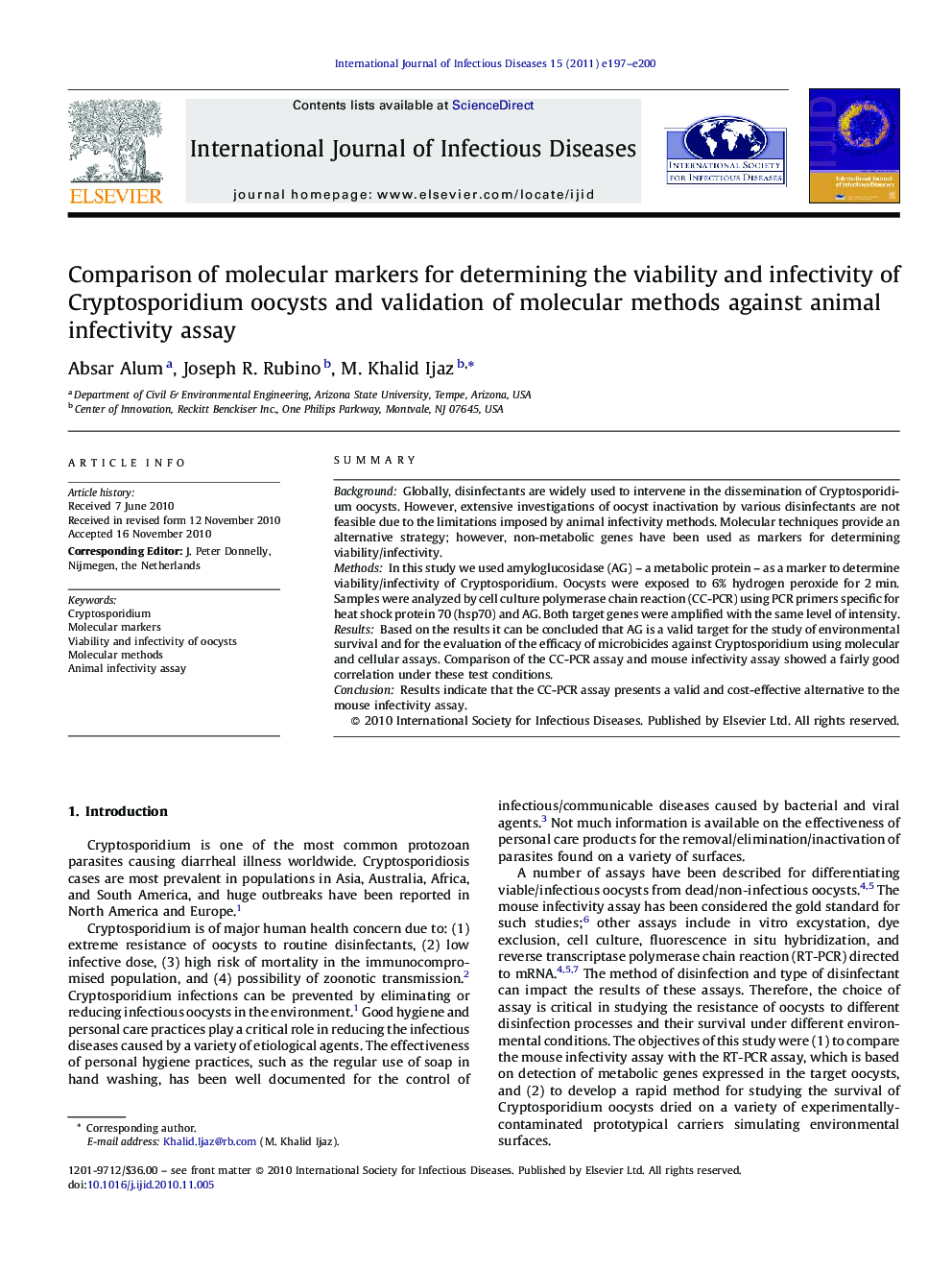| Article ID | Journal | Published Year | Pages | File Type |
|---|---|---|---|---|
| 3363055 | International Journal of Infectious Diseases | 2011 | 4 Pages |
SummaryBackgroundGlobally, disinfectants are widely used to intervene in the dissemination of Cryptosporidium oocysts. However, extensive investigations of oocyst inactivation by various disinfectants are not feasible due to the limitations imposed by animal infectivity methods. Molecular techniques provide an alternative strategy; however, non-metabolic genes have been used as markers for determining viability/infectivity.MethodsIn this study we used amyloglucosidase (AG) – a metabolic protein – as a marker to determine viability/infectivity of Cryptosporidium. Oocysts were exposed to 6% hydrogen peroxide for 2 min. Samples were analyzed by cell culture polymerase chain reaction (CC-PCR) using PCR primers specific for heat shock protein 70 (hsp70) and AG. Both target genes were amplified with the same level of intensity.ResultsBased on the results it can be concluded that AG is a valid target for the study of environmental survival and for the evaluation of the efficacy of microbicides against Cryptosporidium using molecular and cellular assays. Comparison of the CC-PCR assay and mouse infectivity assay showed a fairly good correlation under these test conditions.ConclusionResults indicate that the CC-PCR assay presents a valid and cost-effective alternative to the mouse infectivity assay.
